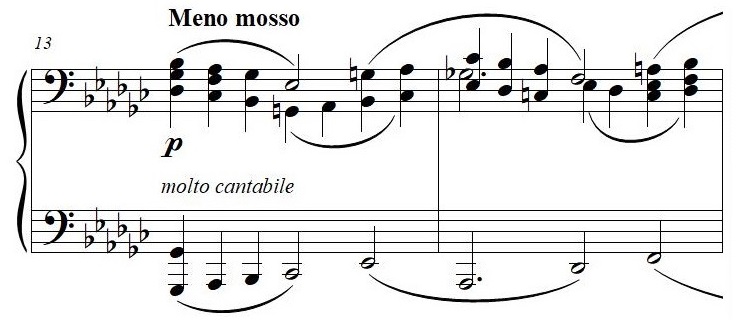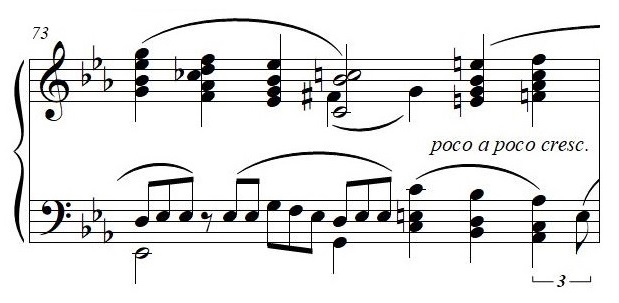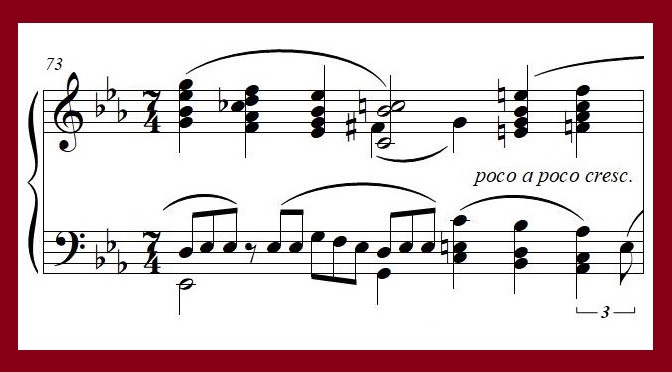A Contrapuntal Finale
The final movement of my Piano Sonata No. 1 is distinctive because of its rare 7/4 meter, but it is perhaps even more remarkable for its applications of counterpoint. The movement interweaves two main themes, each of which is first developed contrapuntally. The two are then combined together in the dramatic final section.

The movement can be heard along with the score in this video:
The A theme (starting around 0:15 in the video above), is fast and jaunty and is composed largely of staccato triplets. Most of its measures naturally subdivide into an asymmetrical 4 + 3, where the two portions are sharply distinguished in rhythm and articulation, rendering this theme especially playful and capricious.

As can be seen in the form diagram at the top of this article, the A section is heard five times in the course of the movement, alternating with contrasting thematic material. Since each occurrence uses the same key center (E♭), the movement is readily recognizable as a rondo form, in the longstanding tradition of rondo finale movements. The first four occurrences of the A theme are in the tonic E♭ minor. In its final appearance, where it is heard together with the B theme, it is in the parallel major (E♭ major). Such shifts to the parallel major near the end of a minor-key work are of course also common in the classical tradition.
The B theme is a chorale-like melody, which makes its initial appearance at bar 13 (marked “Meno mosso“), around 1:00 in the video. It is slower-paced and legato, with thick, lush harmonies.

Here the 7/4 meter has a different effect, giving the theme a more flowing character. The B theme initially appears in G♭ major (III within the movement’s overall key of E♭ minor, and III is also of course the relative major). When this theme returns at bar 47 (4:00 in the video), it is transposed into B♭ major, which of course is the dominant of the movement’s main key center, and appears as a canon, where the imitating voice is at the octave.

Here the two voices are separated by just two beats, and since 2 does not divide evenly into 7, one senses a curious but pleasing discrepancy between the imitative voice’s natural rhythm and the underlying 7/4 meter.
Starting in bar 65, the A theme unexpectedly becomes the subject of a fugato, i.e., a brief fugal exposition (5:45 in the video).

A short transitional C section also appears three times in the movement. It combines motives from the A theme and B theme. But the A theme and B theme are combined much more extensively near the end, starting in bar 73 (6:29 in the video).

This section, which I have labeled as “A+B” in the form diagram, rises gradually to a great climax. The movement then accelerates to a Presto ending that draws upon motives from the sonata’s first movement. The last bar of the movement recalls the beginning of the whole sonata, thus completing the circle.


